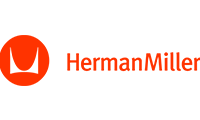800.605.1859 - FREE SHIPPING ON MOST ITEMS OVER $99.00
Accessories
lighting
Designers
- ACHILLE CASTIGLIONI
- ALBERTO MEDA
- ALESSANDRO MENDINI
- ALEXANDER GIRARD
- ALFREDO HABERLI
- ALVAR AALTO
- ANNA CASTELLI FERRIERI
- ANTONIO CITTERIO
- ARNE JACOBSEN
- BARBER & OSGERBY
- CARLO ALESSI
- CARLO MOLLINO
- CHARLES & RAY EAMES
- CHARLOTTE PERRIAND
- EERO SAARINEN
- EILEEN GRAY
- ENZO MARI
- ERNESTO GISMONDI
- ETTORE SOTTSASS
- ACHILLE CASTIGLIONI
- ALBERTO MEDA
- ALESSANDRO MENDINI
- ALEXANDER GIRARD
- ALFREDO HABERLI
- ALVAR AALTO
- ANNA CASTELLI FERRIERI
- ANTONIO CITTERIO
- ARNE JACOBSEN
- BARBER & OSGERBY
- CARLO ALESSI
- CARLO MOLLINO
- CHARLES & RAY EAMES
- CHARLOTTE PERRIAND
- EERO SAARINEN
- EILEEN GRAY
- ENZO MARI
- ERNESTO GISMONDI
- ETTORE SOTTSASS
sale
In-Stock Items

How to Remove Paint From Wood Furniture
November 08, 2022
If you are planning on refinishing a piece of wood furniture that is already painted, one of your biggest tasks is going to be to remove the existing paint from your piece. While it may seem like a big undertaking, if you know what you’re doing. Here’s how to remove paint from wood pieces.
Ways to Remove Paint From Wood
If you want to remove the existing paint from a piece of wood furniture, there are three primary routes you can go. You can use chemicals, sand the piece or use heat. Each of these processes have their advantages and disadvantages.
Chemical Paint Removal
This process involves stripping the paint with a chemical paint stripper that will destroy the pain allowing you to wipe or scrape off the existing finish. While chemical stripping is typically one of the most common ways to remove paint from intricate pieces, the chemicals involved are strong. The process shouldn’t be done inside the house and you will need proper protective gear in order to do this properly.
Sanding
Sanding is a relatively quick way to remove heat and will require a powered sander to get through the layers of paint and down to the wood grain. Sanding requires some knowledge of power tools and understanding that the process can be quite messy.
Heating
Heating is the slowest of the two methods and involves applying heat through a heat gun to soften varnishes or layers of paint and then removing that paint with a scraper. While it takes longer, it is a more natural approach and one that doesn’t leave a lot of mess behind.
Each of these approaches has their own positives and negatives, but they are all proven to work on removing paint from wood furniture without doing extensive damage to the wood underneath.
Steps On How to Remove Paint From Wood
If you are ready to remove paint from your wood furniture, here are the primary steps involved with getting this done. Remember, as you work on removing this paint, make sure that you are careful to not damage the piece underneath that you want to refinish.
1. Find Out if the Wood is Worth Exposing
First, you should check the entire piece to make sure that the wood is worth exposing. You will typically be able to find if it is a real-wood piece of furniture by looking on the bottom of the piece or inside a drawer for a stamp. If the piece is something like particle board or MDF, and not real wood, it probably isn’t worth exposing.
Find a hidden spot to test and check and see if the bottom layer is painted or varnished, by scraping or scratching through the layers with a flat blade. This will tell you if the wood underneath will be able to be stained, or if you will need to go back through and repaint it once you remove it.
If you get down to the original wood and that wood has a layer of varnish on it, chances are, you’ll be able to re-stain it in the future and it may be worth exposing. However, if the bottom layer is painted, there’s a very low chance the wood will be in good-enough condition to sand and stain. You’ll need to repaint that piece.
2. Decide Whether to DIY or Bring in a Professional
This can be a tough step to make a decision on. You should determine whether or not you want to try this project for yourself, or if you want to call in a professional. Most experienced DIY-ers will be able to do a project like this on a basic piece of furniture that has a single layer of paint on it. However, there are other factors to consider, including:
- Whether the furniture itself needs repairs
- How many layers of paint or finishing is on the furniture
- If the job is too big or complicated
- Whether or not it will be dangerous to use the tools necessary to finish the job
- If the piece is too intricate to strip or sand on your own
Deciding that your piece isn’t the perfect DIY-project, you’ll need to make the choice if you want to send it out, or hire someone.
Sent it Out
When is the appropriate time to send a piece of furniture out? When the pieces you want to strip are easily removable. This means smaller piece of furniture, doors or windows. If you have pieces with intricate detailing, like a mantle piece or parts of stairs with ornate carvings in them, you will want to look for a place that has a dip tank.
A dip tank is a special vat that professionals use to soak entire pieces of furniture in liquid paint removers. This is one of the best ways to get faster and more thorough results with these detailed pieces.
Hire Someone In
If you have permanent items or an entire home worth of items that you want stripped bare, such as trim, door jams or siding—then you should bring in a qualified professional to help you. This is usually faster than sending your items out.
If you have lead paint in the home, then you will need to hire a professional who specifically works in lead paint removal. The EPA’s official website has a list of certified lead paint-removal experts that you can hire to do this safely.
Of course, if you don’t hire someone to do the project for you, then you’ll need to choose the approach you want to do yourself in order to get the job done.
3. Select the Right Tools and Approach For the Project
If you’ve decided to remove the painted furniture yourself, then you’ll need to decide between the three aforementioned removal processes: heaters, sanding or chemicals. Here’s how to use each of them.
Heaters
Heaters use high temperatures to soften varnishes or multiple layers of paint so that you can then remove those layers with a scraper. The benefit of heaters is that they minimize dust and can lift years (and layers) of paint off. You’ll need a high-powered heat gun and a good scraper. The great part about heat is there are no dangerous chemicals in your home and no mess from all of the leftover sanding.
Cons of Heaters: They can create fumes and there is a risk of charring the wood if you aren’t careful.
Chemical Strippers
Chemical strippers can come in the form of liquid, gel or paste, but are harsh products that will dissolve paint. There aren’t any paint chips to worry about and no dust. You typically just apply the remover, let it sit and work and start rubbing or lightly scraping off. Chemical strippers are great for pieces with fine details and awkward shapes.
Cons of Chemical Strippers: They can also be messy even if there’s no dust, you need to have plenty of protective gear, they can harm babies and animals in the home and the process can be slow.
Sanders
Sanders, including power sanding disks and clapboard sanders will grind away layers of paint to reveal the wood underneath. Sanders are a great options for larger, flat surfaces, like tables or doors. They are also great for exterior projects. However, unless sanders are hooked up to a vacuum, they can create a huge mess and lots of dust.
Cons of Sanders: Sanding can’t be used on lead-based paint, the power sanders can be messy and expensive and they aren’t great for piece with small surfaces or intricate details.
Here’s what else you need to know about the tools involved with sanding.
3 Tools to Melt Away Paint
In addition to knowing how to remove paint from furniture, it is also important to know about the tools necessary to remove all of this paint, especially if you are using heat. Here are three tools that will help away paint.
Heat Gun
The key to using a heat gun is to find the right temperature. Too low and the job takes too long, too high and you can cause vapors or char the wood.
Infrared Devices
Infrared devices use a different type of heat with rays that will heat up and loosen the bond between paint and its substrate. No noise. No dust. These devices work fast and can soften layers of paint in less than a minute.
Steam Strippers
These paint strippers use high-temp water vapor to soften paint. It can work if you are patient, but it can generate too much moisture in the wood if you aren’t careful.
The Best Techniques For Handling Heat
No matter which of these devices you use, make sure that you hover the device over the surface. When the paint bubbles, slowly move the heater along and try to develop a rhythm so that you’re scraping and heating in unison.
Safer Options for Removing Paint With Gels and Pastes
If you’re worried about the heat and want to use the chemical option to remove paint, there are some safer products out there that aren’t as harsh as chemicals used in the past. Here are three great options to consider.
SmartStrip
This product works along with a wet nylon brush to soften and remove unwanted paint.
Peel Away
With this product you peel off the top layer, scrub the surface of your item with a wet brush and let it dry. Then you apply a neutralizing solution that peels away the unwanted paint.
Citristrip
Known as one of the most powerful stripping agents (and one that is still safe for in the home) this gel-like product sits on furniture and gets to work. Then, scrape off the paint with a plastic scraper and use an abrasive pad and mineral spirits to remove residue.
No matter how you decide to remove paint from your furniture, make sure that you are well-versed in all of the techniques involved so you can make a smart decision that will keep your piece in-tact.
Also in News
Subscribe
Sign up to get the latest on sales, new releases and more …







